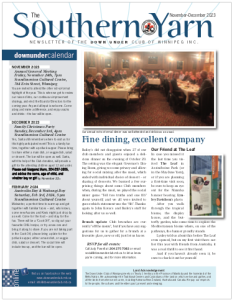The November December issue of The Southern Yarn is available online now, in full colour with links to source and extended content. It will also be in the post this week, in its glorious goldenrod analog paper edition, for those who still anticipate delivery in their letter boxes.
To get you started, here is the editorial:
On 20 September, 1939, Prime Minister Robert Menzies announced to Parliament that Australia was offering the British Government an expeditionary force to bolster the Royal Air Force as it expanded for World War II.
Apart from a force headquarters, the offer comprised 1 Fighter Wing Headquarters with Nos 7 and 15 Squadrons; 2 Bomber Wing Headquarters with Nos 1 and 8 Squadrons; 3 Bomber Wing Headquarters with Nos 16 and 17 Squadrons; and an Air Stores Park, a Medical Receiving Station, a Base Area Headquarters and a Base Depot. The number of personnel required to service this force totalled 3,200 officers and personnel, including a reinforcement pool of 225.
Although the offer was accepted and recruitment commenced on 9 October, Australia’s subsequent commitment to the Empire Air Training Scheme saw the expeditionary plan put on hold on 20 October, then cancelled altogether 11 days later. [Link] (That explains why our DUCW foundational members came to Canada – under the Commonwealth Air Training Plan – instead of training on home turf.) Nevertheless, an air base was established at Darwin in June the next year – See Getting to know (p.6). It played a pivotal role in the defence of Australia, despite the damage and losses sustained in the ’42 Japanese raid. The US 380th Bomb Group arrived in April 1943 and was placed under the control of the Royal Australian Air Force (RAAF). The 380th Group’s B-24s made the longest bombing missions of WWII, multiple times, to the oil refineries at Balikpapan, Borneo (320 kilometres further than the Ploesti mission in Europe) and to those at Surabaja, Java. Unfortunately, one of its B24 Liberators crashed during a training exercise with the loss of all six crew.
I visited that crash-site with a group of friends in the early ’70s. The Northern Territory Government declared the site a heritage area in 2002. [Link] Baz Luhrmann’s movie “Australia” brought home some of the realities of the war years in the Top End and that experience can be revisited with the upcoming “Faraway Downs” (see p.3).
Thank you to Judy, Peter, Jenny, Margaret, Chris, Brian and our advertisers for their contributions for this issue.

